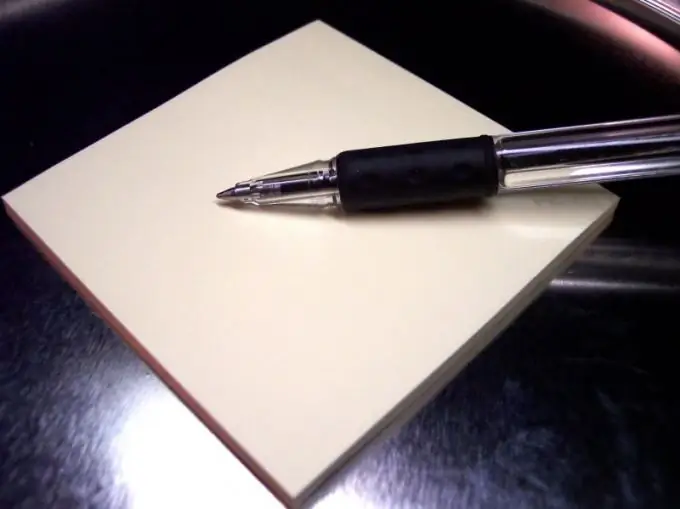Despite the huge number of modern ways to record and store information, stenography has not yet gone out of use. Its advantages over conventional writing are obvious: it is both speed and the ability to write text without abbreviations, not to mention significant savings on paper. It also has other advantages. For example, for people with predominant motor memory, stenography allows not only fixing, but also quickly assimilating the material.

It is necessary
- - a stenography textbook or a computer with the Internet;
- - school notebook in 2 lines;
- - several ballpoint pens;
- - stopwatch;
- - player;
- - recordings of speech and songs.
Instructions
Step 1
You can learn to transcribe with a teacher or on your own. The advantage of the first method is that a good teacher will help you choose the optimal system and place your hand. But teachers of this discipline are not met so often now. If you can't find it, start practicing on your own. Select a tutorial. It can be both a print edition and a website.
Step 2
Set aside time to practice. Get ready for the fact that you will have to practice every day for about three hours for three to four months. Spend one hour on theory, two on exercises. Even if you cannot find that much time every day, do not interrupt your studies. On busy days, practice at least half an hour.
Step 3
Learn the shorthand alphabet and word combinations. Remember them visually first. Then start writing. Follow the exercises in the order in which the textbook is presented. Don't be surprised that shorthand doesn't offer any speed advantage at first. On the contrary, at first you need to write very slowly and very carefully. Convey the outline of the characters and their size as accurately as possible. Otherwise, you may have difficulty decrypting the recording. Don't forget to read what you have written.
Step 4
Practice reading your verbatim notes daily. Training should run in parallel. Be sure to read both the examples from the tutorial and what you wrote yourself. Spot mistakes and correct them. Pay special attention to the style of those signs that caused difficulty in reading.
Step 5
Repeat the rules of the Russian language, especially paying attention to the composition of the word. In shorthand, the characters for prefixes, roots, suffixes, and endings are different. Therefore, you need to be clear about which part of the word you are dealing with. Also repeat the formation of compound words.
Step 6
Having learned how to write smoothly and clearly in a notebook for first graders, go to the sheets in the ruler. Try to be precise about the style, slant, and size of the icons. Once you've mastered an element, start gradually introducing it into your notes. Write quickly but neatly.
Step 7
Control yourself with a stopwatch. When you’re convinced that you’re already writing at 60 characters per minute, try writing down the lyrics. Start with one that is written at a medium or slow pace. Gradually move on to faster compositions. If you do not have time to remember the icon, do not stop, but write down the necessary place in the way that is more convenient for you. Over time, you will stop thinking about what a particular symbol looks like. After writing down the lyrics of the song, listen to it again and check what you get.







